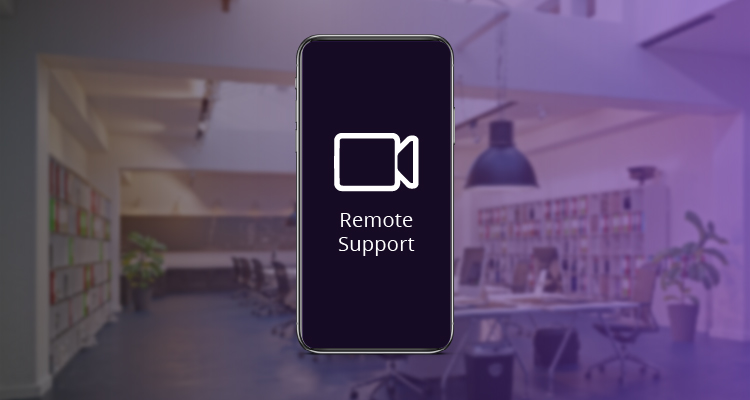Remote Support Suddenly Sounds Like a Much Better Idea

Back in the late fall of 2019, I first heard of Teleportivity. It was in a demo video that Gary Kayye posted right here on rAVe [PUBS]. My initial thought was that the idea was great, but I wondered about the product’s efficacy at smaller institutions like mine, or even mid-size colleges and universities. My classroom support team is widely considered the best IT service on campus, and I know many in house AV teams have the same reputation. They build great rooms, are easy to consult with and provide over-the-top customer service. It is that customer service piece that really builds trust, however. Our faculty and staff feel that if they press the “help” button, the issue is solved, they no longer worry about it. So, I had difficulty thinking about having those staff replaced by an unknown face on a video screen. How would our faculty react, and how could solutions like Teleportivity affect the overall view of these services on our campus?
Well, that was a different time. We are now in August 2020, and in the middle of a pandemic, that is — literally — raging across the country. We are all thinking of serving our faculty and staff in the short term and long. In a few weeks, many of us will welcome some or all of our students and faculty back. Fall is typically when people run into glitches or need some help and training in our classrooms; we intend to send tech staff to our rooms to support these needs. However, we are already struggling with occupancy limits and spacing, so yes, one more person can cause a problem with that. Additionally, these are staff members who will end up visiting a large portion of the rooms and interacting with a wide variety of people. Therefore, in these times, they pose a higher risk to themselves and our customers.
I began to look at Teleportivity again recently, and have become intrigued with the services it offers. The company provides several different tools and services. The big one is the virtual live help. A faculty member in a classroom can request support via an iPad in the classroom. When they do, a live video chat starts. That person knows the room where the call comes from and has full access to the AV system. When they speak with the faculty member and hear what the problem is, they can try and fix it remotely. Another beneficial addition to this service is that the faculty member could pull out their phone and “transfer” the help call to their phone. They can then use either the front or the rear camera to show the technician something if needed. This may mean showing them the front of the rack, for example, and the technician could see that the amplifier had been turned off.
At my school, we had never done anything like this for two main reasons. First, we had heard from the faculty that they did not like having to be on the phone with someone who is trying to walk them through fixing the problem themselves. This is resolved quite a bit by this videoconferencing technique, and the remote access to the system. The tech does not need to walk through a troubleshooting list blind, instead they hear what is wrong and then work the system behind the scenes to fix it. So, the faculty member does not have to spend time trying to solve a problem or look foolish in front of their students.
The second reason is that we have a smaller campus, and can pretty much get anywhere within five minutes. That quick response time, along with a desire for a personal touch, has driven our policy. But as I review that again, even a five minute response time is wasting five minutes. Suppose we could instantly start a conference with a faculty member. In that case, time is not wasted. Indeed, on larger campuses where visiting a classroom requires a 20-minute trip or for those with remote locations, this saves a vast amount of time.
Part of our role right now in supporting our institutions through this medical (and financial) crisis is to be mindful of expenses. If we can save hours over a week by using these services, it turns out to be significant financial savings in the long run. The service also allows you to scale your operations in ways you may not have been able to in the past. If you have a significant event on campus (like reunion, parents weekend, etc.), this service can take on many of the trouble calls. Typically, for large events like those listed, the AV group turns to other departments and asks them to pitch in. Now, they can have live (but remote), fully qualified support available.
One question I do have is whether Teleportivity, sold in the U.S. through Liberty, offers its own staff to support these calls, or has internal staff (to the college/university) to use these tools and serve as the tech who answers the calls. In most cases, it would be ideal for the internal staff to be answering the calls, as it is helpful for the faculty to recognize a voice and a face as part of the campus community. Using the Teleportivity staff as a backup for illness, outage, etc. could still be an offering and a great revenue source for the integration firm. Finally, I guess that some higher ed in-house integrators are reading this thinking, “we can just build this ourselves.” While that may be true, I have to ask the question: Can you do it better and at a lower cost than a service that already exists, and can you continue to scale it and improve it in the way a commercial firm is going to? Also, is that really the work that your staff should be doing to provide the highest value to your institution?
I think that Teleportivity has developed a brilliant concept here, and its timing is fortunate. You can check out the Teleportivity rAVe article here. Here is a video demo from Teleportivity at InfoComm 2019.




